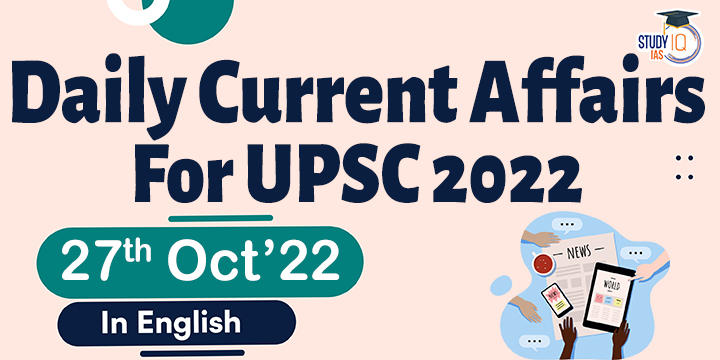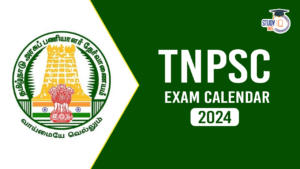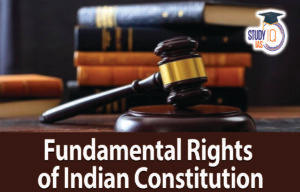Daily Current Affairs for UPSC 2022
Q) Consider the following statements regarding Lancet Report on Health and Climate Change.
- Between the period of 2000-2004 to 2017-2021, heat-related deaths increased by 55% in India.
- Due to heat exposure, India lost 167.2 million potential labor hours in 2021 with income losses equivalent to about 15.4% of GDP
Which of these statements are correct?
- 2 only
- Both 1 and 2
- 1 only
- Neither 1 nor 2
Daily Current Affairs for UPSC – 22 October 2022
Explanation:
Context: The seventh Lancet Countdown report titled “The 2022 Report of The Lancet Countdown on Health and Climate Change: health at the mercy of fossil fuels” was released.
About the Report
- The Lancet Countdown report represents the work of 99 experts from 51 institutions, including the World Health Organization (WHO) and the World Meteorological Organization (WMO), and is led by University College London.
- The 2022 report has 43 indicators to monitor the impact of extreme temperature on food insecurity, household air pollution, and the alignment of fossil fuel industry with a healthy future.
India specific factsheet
- Taking 1981-2010 as the baseline, the duration of the growth season for maize has decreased by 2%, while the decrease for rice and winter wheat is by 1%.
- Compared to 1986-2021, from 2012-2021, each infant experienced an additional 0.9 heatwave days per year while adults over 65 years age experienced an additional 3.7 heatwave days per person.
- Between the period of 2000-2004 to 2017-2021, heat-related deaths increased by 55% in India. (Statement 1 is correct)
- Due to heat exposure, India lost 167.2 billion potential labour hours in 2021 with income losses equivalent to about 5.4% of GDP. (Statement 2 is not correct)
- Between 1951-1960 to 2012-2021, the number of months suitable for dengue transmission rose by 1.7%, reaching 5.6 months each year.
Q) Consider the following statements regarding Blue Flag Programme
- The Foundation for Environmental Education in Europe (FEEE) was formed by the OECD that gave the concept of Blue Flag Beaches.
- The Blue Flag programme is run by the FEEE and is headquartered in Copenhagen, Denmark.
- In 2001, FEEE rules were changed to allow non-European national organisations, and South Africa became the first country outside of Europe to join the initiative.
Which of these statements are correct?
- 1 and 3 only
- 2 and 3 only
- All of the above
- 1 and 2 only
Explanation:
Context: With two new beaches included in the list of Blue Beaches, India now has 12 Blue Flag beaches.
What is the Blue Flag programme?
- The Blue Flag Initiative began in France and in 1987, the Foundation for Environmental Education in Europe (FEEE) was formed by the European community that gave the concept of Blue Flag Beaches. (Statement 1 is not correct)
- The Blue Flag programme is run by the FEEE and is headquartered in Copenhagen, Denmark. (Statement 2 is correct)
- In 2001, FEEE rules were changed to allow non-European national organisations, and South Africa became the first country outside of Europe to join the initiative. (Statement 3 is correct)
Q) Recently in news, Kadmat Beach is located in which of the following states/union territories?
- Andaman and Nicobar Islands
- Kerala
- Tamil Nadu
- Lakshadweep
Explanation:
Blue Flag Programme in India
- India has aimed at expanding the network of Blue Flag certification to 100 such beaches in the country in the next five years.
- India launched its own eco label Beach Environment and Aesthetics Management Services (BEAMS) under its Integrated Coastal Zone Management (ICZM) project in 2018.
- India’s first Blue Flag beach was Chandrabhaga beach on the Konark coast of Odisha.
- The new entries from India
| Minicoy Thundi Beach, Lakshadweep | Most pristine and picturesque beaches in the Lakshadweep archipelago where white sand is lined by turquoise blue water of the lagoon. It is a paradise for swimmers and tourists alike. |
| Kadmat Beach, Lakshadweep | Popular with cruise tourists who visit the island for water sports. |
Q) Consider the following statements regarding history of currency design in India
- Dalhousie first introduced paper currency in Indian subcontinent by the Paper Currency Act of 1861.
- The Act of 1861 authorised the Presidency Banks to enter into agreements with the Secretary of State for becoming agents for the issue, payment and exchange of promissory notes of the Government of India.
- The first set of British India notes were the ‘Elizabeth Portrait’ Series issued in denominations of 10, 20, 50, 100, 1000 manufactured at the Laverstock Paper Mills.
Which of these statements are not correct?
- 1 and 2 only
- All of the above
- 1 and 3 only
- 2 and 3 only
Explanation:
Context: Some Political leaders asked the government to put pictures of Goddess Lakshmi and Lord Ganesh on currency notes in order to bring “prosperity” to the country.
History of currency design in India
- Designing coins and currency has been seen as a symbol of sovereignty since ancient times.
- The coins during the rule of Samudragupta of the Gupta empire, 335–375 CE, bore images of his valour.
- Kushana empire has been credited with introduction of gold coins in India.
- Viceroy Canning first introduced paper currency in Indian subcontinent by the Paper Currency Act of 1861. (Statement 1 is not correct)
- The Act of 1861 authorised the Presidency Banks to enter into agreements with the Secretary of State for becoming agents for the issue, payment and exchange of promissory notes of the Government of India. (Statement 2 is correct)
- The first set of British India notes were the ‘Victoria Portrait’ Series issued in denominations of 10, 20, 50, 100, 1000 manufactured at the Laverstock Paper Mills. (Statement 3 is not correct)
Q) Recently, a report titled “Generation Hope: 2.4 billion reasons to end the global climate and inequality crisis” has been released by which of the following organisations?
- World Economic Forum
- Save the Children NGO
- World Bank
- OECD
Explanation:
Context: Save the Children NGO released a report titled “Generation Hope: 2.4 billion reasons to end the global climate and inequality crisis”.
About the News
- According to the report, there are almost 350 million children across Asia, including 222 million in India, who are gripped by both grinding poverty and climate disaster.
- It has highlighted that Cambodia tops the list of Asian countries most likely to face the “double threat” of poverty and climate disaster with 72% of children in the country affected, followed by Myanmar (64%) and Afghanistan (57%).
- Nearly 351.9 million children in India are estimated to be affected by at least one extreme climate event a year with some at particular risk because of living in poverty.
- The report has warned that if the climate and inequality crises are not addressed with urgency, the frequency and severity of humanitarian and cost of living crises are set to soar.
Q) Recently in news, Earth Surface Mineral Dust Investigation, or EMIT used for identification of Methane super-emitters is administered by which of the following organisations?
- ISRO
- JAXA
- ESA
- NASA
Explanation:
- Context: More than 50 methane “super-emitters” have been identified by NASA, in Central Asia, the Middle East and the Southwestern United States.
- NASA’s Earth Surface Mineral Dust Investigation, or EMIT, which is an imaging spectrometer, was used for identification of methane “super-emitters”.
- The spectrometer was built primarily to identify the mineral composition of dust blown into the atmosphere from Earth’s deserts and other arid regions by measuring the wavelengths of light reflected from the surface soil in those areas.
Q) Consider the following statements regarding the Bhoota Kola ritual
- Bhoota Kola is an annual folk ritual of Telugu-speaking people in Dakshina Kannada, Uttara Kannada and Udupi.
- The word Bhuta means spirit of supernatural power and Kola means a ceremony for powers.
Which of these statements are correct?
- 1 only
- Both 1 and 2
- Neither 1 nor 2
- 2 only
Explanation:

What is Bhoota Kola?
- Bhoota Kola is an annual folk ritual of Tulu-speaking people in Dakshina Kannada, Uttara Kannada and Udupi in Karnataka and some Kerala districts where local spirits or deities are worshipped. (Statement 1 is not correct)
- The word Bhuta means spirit of supernatural power and Kola means a ceremony for powers. (Statement 2 is correct)
- As per Tulu Adivasi tradition, Bhoota Kola or Daiva Kola is a “non-vedic” ritual where Bhootas or Daivas (guardians and ancestors) are worshipped.
- It is widely believed these spirits protect the village from unfortunate incidents.
Q) The Genetic Engineering Appraisal Committee (GEAC) has, recently, approved seed production of which of the following genetically modified crop?
- Mustard
- Brinjal
- Cotton
- Tomato
Explanation:
Context: The Genetic Engineering Appraisal Committee (GEAC) has approved seed production “prior to commercial release” of India’s first indigenously developed transgenic hybrid mustard.
About the GM Mustard Variety
- The transgenic mustard hybrid DMH-11 contains two alien genes isolated from a soil bacterium called Bacillus amyloliquefaciens that enable breeding of high- yielding commercial mustard hybrids.
- This GM hybrid is a product of crossing two plants containing alien ‘barnase’ and ‘barstar’ genes derived from a soil bacterium.
- DMH-11 is claimed to produce 25-30 per cent more grain/seed than the existing high-yielding mustard varieties.
- Status of other GM Crops: India has until date approved GM breeding technology only in cotton. Previous attempts at commercial release of GM brinjal were foiled by environmental activists.
Q) Consider the following statements regarding the Aegean Sea
- Aegean Sea is surrounded by Greece and Turkey only.
- It is connected to the Sea of Marmara through Bosphorus Strait
- The Sea of Marmara is connected to the Black Sea through the Dardanelles Strait
Which of these statements are correct?
- 2 and 3 only
- 1 only
- All of the above
- None of the above
Explanation:

- Aegean Sea is surrounded by Greece and Turkey only. (Statement 1 is correct)
- It is connected to the Sea of Marmara through Dardanelles Strait. (Statement 2 is not correct)
- The Sea of Marmara is connected to the Black Sea through the Bosphorus Strait (Statement 3 is not correct)
Q) Which of the following countries was not one of the founders of the ASEAN group?
- Indonesia
- Vietnam
- Thailand
- Philippines
Explanation:
- ASEAN was established in August 1967 in Bangkok, Thailand with the signing of the ASEAN Declaration (Bangkok Declaration) by the founding fathers of ASEAN, namely Indonesia, Malaysia, Philippines, Singapore and Thailand.
Daily Current Affairs for UPSC – 28 October 2022


 Current Affairs 24th April 2024 for UPSC...
Current Affairs 24th April 2024 for UPSC...
 TNPSC Exam Calendar 2024, Check Exam Dat...
TNPSC Exam Calendar 2024, Check Exam Dat...
 Fundamental Rights of Indian Constitutio...
Fundamental Rights of Indian Constitutio...

















